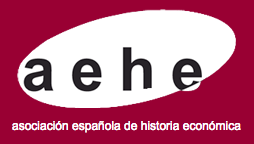Opium after the Manila Galleon: The Spanish involvement in the opium economy in East Asia (1815-1830)
DOI:
https://doi.org/10.1016/j.ihe.2014.07.001Keywords:
Opium, Spain–China relations, Spanish Royal Philippine Company, Jardine Matheson & Co., N45, N75, N76, N85Abstract
This paper identifies the Spaniards’ involvement in the opium trade in China at the beginning of the 19th century. Several sources have been consulted, mainly the Jardine Matheson Archive at the University of Cambridge and the Archivo General de Indias in Seville. These activities took place from the end of the Manila Galleon until 1830, and were undertaken by some employees of the Spanish Royal Philippine Company in Calcutta and Canton in their private businesses. These houses collaborated closely with the British firms during the opium boom, and Manila private financial support was provided. Thus, Spaniards undoubtedly made a fundamental contribution during a key stage of development of the opium economy and evolution of modern Chinese history, being a precedent of what became the prestigious British company Jardine, Matheson & Co.Downloads
Downloads
How to Cite
Issue
Section
License
Aquellos autores/as que tengan publicaciones con esta revista, aceptan los términos siguientes
- Los autores/as conservarán sus derechos de autor y garantizarán a la revista el derecho de primera publicación de su obra, el cuál estará simultáneamente sujeto a la Licencia de reconocimiento de Creative Commons Reconocimiento-No comercial-Sin obra derivada 4.0 Internacional que permite a terceros compartir la obra siempre que se indique su autor y su primera publicación esta revista, y no permite hacer uso comercial de la misma ni tampoco obras derivadas.
- Los autores/as podrán adoptar otros acuerdos de licencia no exclusiva de distribución de la versión de la obra publicada (p. ej.: depositarla en un archivo telemático institucional o publicarla en un volumen monográfico) siempre que se indique la publicación inicial en esta revista.
Plagio y fraude científico
La publicación de un trabajo que atente contra los derechos de propiedad intelectual será responsabilidad de los autores/as, que serán los que asuman los conflictos que pudieran tener lugar por razones de derechos de autor. Los conflictos más importantes pueden darse por la comisión de plagios y fraudes científicos.
Se entiende por plagio:
- Presentar el trabajo ajeno como propio.
- Adoptar palabras o ideas de otros autores sin el debido reconocimiento.
- No emplear las comillas u otro formato distintivo en una cita literal.
- Dar información incorrecta sobre la verdadera fuente de una cita.
- El parafraseo de una fuente sin mencionar la fuente.
- El parafraseo abusivo, incluso si se menciona la fuente.
Las prácticas constitutivas de fraude científico son las siguientes:
- Fabricación, falsificación u omisión de datos y plagio.
- Publicación duplicada.
- Conflictos de autoría.





